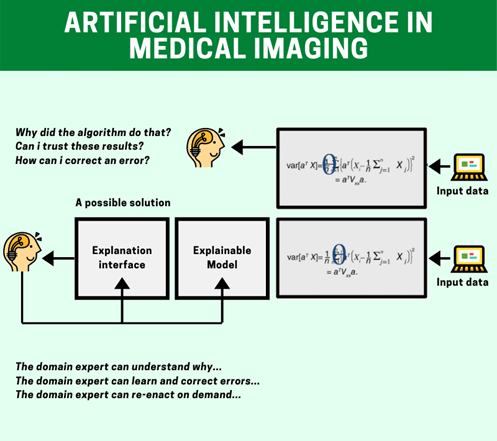
Role of Artificial intelligence in precision medicine
October 16, 2020
Fundamental steps in artificial neural networks-based medical diagnosis
October 22, 2020Brief:
- Artificial intelligence offers a seizable promise for medical diagnostics. Evaluation of the diagnostic accuracy of artificial intelligence algorithms process is comparing it with the data of healthcare professional records.
- A systematic review of imaging techniques by artificial intelligence is useful here to research by biomedical researchers for their investigations.
- Pubrica is here to help you with systematic review writing services to understand the various concepts of Artificial intelligence in imaging techniques.
Introduction
The significance of artificial intelligence has to change daily life through its AI tools like speech recognition, robotics, etc. Most of the healthcare sectors achieved great success using artificial intelligence. It is essential to conduct a systematic study about the artificial analytical tools for the various biomedical researches. Many reviews state that “the significance of artificial intelligence will replace the medical disciplines or create new job type for doctors and other clinicians”.
Medical imaging- A systematic review
Diagnostic information for human using medical imaging is one of the most valuable sources in the healthcare field. Data interpretation is facing more challenges. Despite hurdles, the diagnostic tool of medical imaging need is increasing as the available specialists cannot perform such complicated tasks, especially in underdeveloped and developing countries. The diagnosis through AI using automated machines will understand deep learning that will be able to solve the problem. In recent years deep learning models exceed the human performance creates excitement among the people. However, there are many critical challenges raised against this new technology. A systematic review writing about artificial intelligence and machine learning is essential to come up with a better conclusion about this new emerging technology.
FDA- Artificial imaging
Conducting a systematic review in the US Food and Drug Administration states that the systematic study of the body using an AI tool is harmless and gives rapid results with 30 AI algorithms. The government of the US implement the usage of artificial intelligence in medical sectors. All the medicos and clinicians are allowed to study the instrumentation of synthetic intelligence.
Evidence for this review
They are deep learning through AI that promises in improving the accuracy and speed of diagnosis for patients through medical imaging. Public interest in artificial intelligence is growing every day and driving the market forces in diagnostic technologies. Many studies developed or validated AI for the diagnostic feature of any diseases without any restrictions in language. These studies recognise a change in model systems by creating deep learning approaches, results in accurate algorithms using artificial intelligence when compared to humans. No other systematic review is comparing performances of Artificial intelligence and machine learning with the other medical professionals. Many disease-specific systematic reviews are here using machine learning technologies with reported algorithms.

Additional benefits of this review
The first systematic review is comparing the diagnostic accuracy of all artificial intelligence tools and machine learning models against professional clinicians using medical imaging published upto date. Very few studies provide direct comparisons between deep learning and clinical professionals validation histories. The machine learning validation is more accurate. As per the meta analysis of deep learning techniques and health care professional analysis, clinicians can process many new algorithms, and external proofs are also possible. These sets a pathway to external validations in all predictive models. Both healthcare and deep learning algorithms overestimates internal guarantees.
Future implications
The methodologies and process of studies are always incomplete in deep learning techniques. The level of diagnostic accuracy can be faster in future. FDA will introduce New international standards of protocols in future and implement new learning methods. The source of data interpretation will be better in future, and writing a systematic literature review helps to understand the concepts of deep learning techniques.
Conclusion
In this systematic review writing services under the guidance of Pubrica, the current state of diagnostic performance using artificial intelligence in comparison with the healthcare professionals considering the daily issues faced by the world in medical sectors are studied. A meta analysis of artificial intelligence and deep learning tools will help us to know more about the future improvisions in medical fields.
References:
- Liu, X., Faes, L., Kale, A. U., Wagner, S. K., Fu, D. J., Bruynseels, A., …& Ledsam, J. R. (2019). A comparison of deep learning performance against healthcare professionals in detecting diseases from medical imaging: a systematic review and meta-analysis. The lancet digital health, 1(6), e271-e297.
- Langerhuizen, D. W., Janssen, S. J., Mallee, W. H., van den Bekerom, M. P., Ring, D., Kerkhoffs, G. M., … & Doornberg, J. N. (2019). What are the applications and limitations of artificial intelligence for fracture detection and classification in orthopaedic trauma imaging? A systematic review. Clinical Orthopaedics and Related Research®, 477(11), 2482-2491.
- Yao, A. D., Cheng, D. L., Pan, I., & Kitamura, F. (2020). Deep Learning in Neuroradiology: A Systematic Review of Current Algorithms and Approaches for the New Wave of Imaging Technology. Radiology: Artificial Intelligence, 2(2), e190026.
- Sollini, M., Antunovic, L., Chiti, A., &Kirienko, M. (2019). Towards clinical application of image mining: a systematic review of artificial intelligence and radionics. European journal of nuclear medicine and molecular imaging, 1-17.
